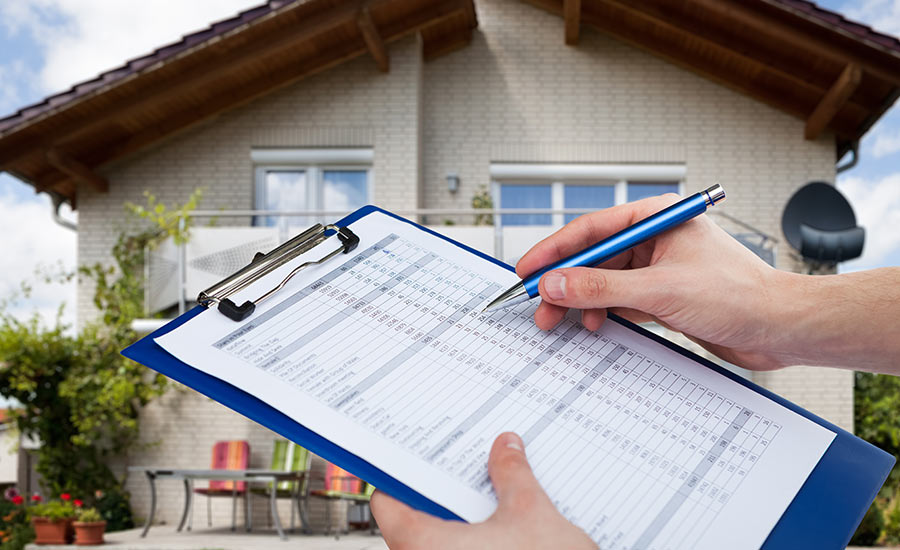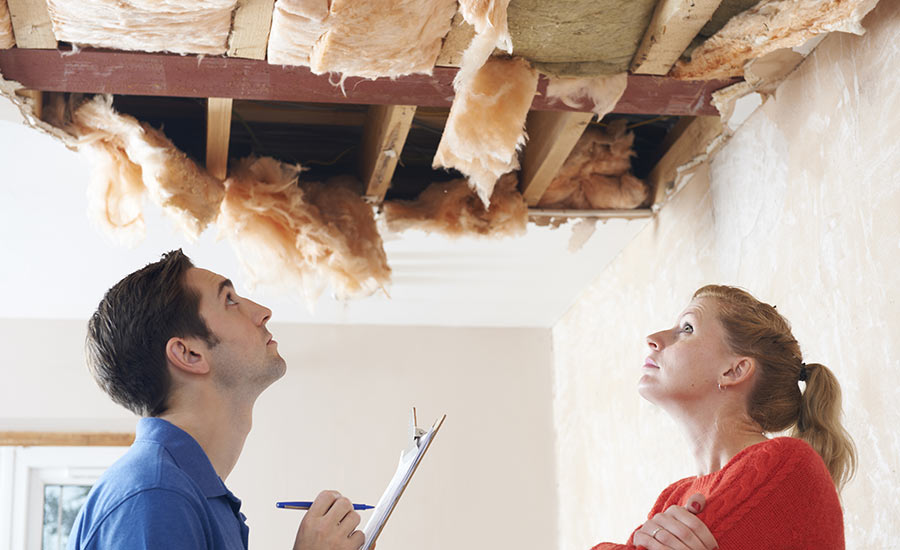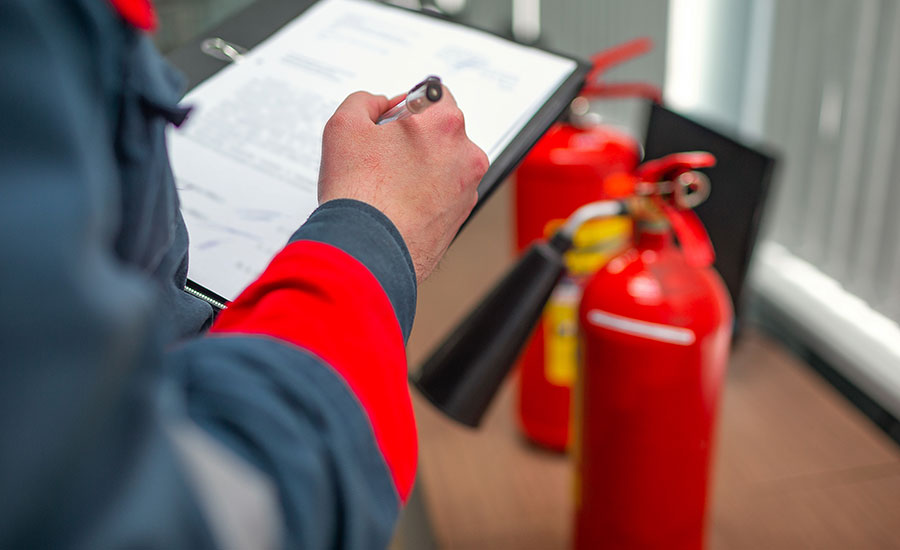
As a Federal Housing Administration (FHA) inspector, it’s important to ensure that you are properly conducting and documenting each inspection. The most effective way to do this is through a detailed FHA inspection checklist.
A checklist will help you navigate the inspection process from start to finish, ensuring compliance with FHA requirements.
We’ll cover what an FHA checklist should include, provide a comprehensive template and explain how switching to digital checklists can help you improve efficiency and stay organized on the job.
Table of Contents
Create a custom FHA inspection template.
Try doForms for free!
What Is An FHA Inspection?
What Is An FHA Inspection?
An FHA inspection is the thorough examination of a property to ensure that it meets the minimum property standards set by the FHA, before an FHA loan is granted to a prospective buyer.
Covering different home components, such as plumbing, electrical, roofing and foundation, to ensure that a home is well-maintained and safe, an FHA inspection serves to:
- Determine a home’s market value
- Evaluate the appropriate loan amount for the buyer
- Identify any serious issues with the home
- Protect buyers from investing in properties with potential problems and falling into a money pit
An FHA inspection is carried out by an inspector who is licensed by the U.S. Department of Housing and Urban Development (HUD) and hired by a mortgage lender.
It typically takes several hours to inspect a property. Once the inspection is finalized, the FHA inspector sends the results to the lender for an additional review.
If the lender approves the inspection findings in terms of livability and estimated value, the loan is granted to the buyer.
If the inspector finds serious issues related to safety or health, such as dangerous structural problems or black mold, the lender may deny the property loan until the problem is solved.
In addition to satisfying the lender’s requirements, an FHA inspection report provides peace of mind for buyers who want to make sure that their future home is secure and their investment is safe.
Unlike an appraisal, which is meant to determine a home’s value and protect the interests of the lender, an FHA inspection is meant for a more in-depth home analysis and serves the interests of both the buyer and lender.
What Does An FHA Inspector Use a Checklist For?
An FHA inspector uses a checklist to examine both the interior and exterior of a home.
An inspector looks for:
- Electricity or plumbing problems, such as faulty wiring, outdated components or dripping pipes
- Neighborhood or property-related issues, such as sinkholes, oil or gas wells and abandoned wells
- Structural problems, such as damaged walls or damaged foundation, which can be detected by water stains on the walls or ceiling, or foundation cracks
- Pest infestation, based on signs, such as rodent droppings or termite tunnels
- Roof problems, including leaks or moisture buildup
- Lead paint hazards, as exposure to lead may result in health problems, such as kidney problems, reproductive issues and blood pressure issues due to lead toxicity
- Asbestos hazards, as exposure to asbestos may lead to health issue such as lung problems and cancer
- Trip hazards, such as poorly installed carpeting and heaving or cracked sidewalks
- General home safety and security issues, such as a lack of smoke detectors or functioning locks on all entry points
- Signs of poor workmanship, such as improper plumbing or wiring
- Accessibility issues, such as lack of handrails on stairs or lack of an accessible route to reach the house in an emergency situation
By taking these factors into account, an inspector is able to conclude whether the property meets the necessary FHA inspection requirements and standards for safety and livability.
For example, the FHA requires a home to have:
- A sound foundation, roof and exterior
- Safe access
- Safe and functioning electrical systems
- Gas, electrical, water and sewage systems that work properly
- A functional, permanent heating system
- Easy access to the attic
- Natural ventilation in crawl areas
- Access to potable water

During an FHA inspection, an inspector checks a home for accessibility, structural problems, pest infestation and poor workmanship, among other inspection items
FHA Home Inspection Checklist Template
Find an FHA home inspection checklist below, organized by room. Key inspection areas are included in each:
1. Home Exterior
You’ll want to check the home exterior for leaks, cracks, peeled paint, lack of railings, malfunctioning doors and compliance of the swimming pool (if applicable) with the local regulations.
The home exterior inspection should include:
- The foundation
- Stairs and railings
- Siding
- Doors
- Lead paint on exterior surfaces for homes built before 1978
- Roof
- Roof drainage
- Chimney
- Porch
- Balconies
- Garage
- Garage doors
- Swimming pool
2. Heating & Plumbing
When inspecting heating and plumbing systems, you’ll want to check for leaks and other major issues.
The heating and plumbing inspection should include:
- Water supply, whether an approved city sewer or a well
- Water heater
- Heating unit
- Ventilation and cooling units
- Plumbing systems
- Sewer connection to a city sewer or a septic system
- Emitted smoke
- Emitted smell
3. Rooms
When inspecting each room in the home, you’ll want to check for cracks, leaks, dangerous cables, non-functioning security features and signs of improper workmanship.
The room inspection should include:
- Electricity condition in each room
- Presence of lead-based paint
- Floor
- Walls
- Windows
- Ceiling
- Doors
- Security features, including smoke detectors, fire sprinklers, fire alarms, CCTV cameras and security bars
4. Kitchen
In the kitchen, you’ll want to make sure all appliances are functioning as they should and wiring is safe.
The kitchen inspection should include:
- Stove
- Oven
- Refrigerator
- Other kitchen appliances
- Sinks
5. Bathroom
In the bathroom, you’ll want to check for leaks coming from the tub, sink or toilet, along with water pressure issues and plumbing issues.
The bathroom inspection should include:
- Running water
- Water pressure
- Presence of ventilation, either a window or an exhaust fan
- Toilet
- Sink
- Shower or tub
- Floor
6. Attic
When inspecting the attic, you’ll want to ensure safe access and check for leaks and structural problems.
The attic inspection should include:
- Support structures
- Water damage
- Ventilation
7. Crawl Space
In the crawl space, you’ll want to check for debris, moisture and pooling water.
The crawl space inspection should include:
- Access to the crawl space area
- Support beams
- Ease of maintenance and repair
8. General Health & Safety
When inspecting the general health and safety of the property, you’ll want to check for dangerous materials, signs of mold or debris and other potential hazards.
The general health and safety inspection should include:
- Home accessibility
- Smoke detectors
- Elevators
- Stairs
- Interior air quality
- Fire exits
- Signs of pest infestation
- Mold
- Asbestos
- Presence of garbage and debris
9. Accessibility
When evaluating the home’s accessibility, you’ll want to make sure the property has easy access for everyone, including those with disabilities.
The accessibility inspection should cover:
- Access to the home by pedestrians, emergency vehicles and other vehicles in all weather conditions
- Ramps
Additional Hazards & Nuisances
When inspecting for additional hazards and nuisances, you’ll want to check for contaminated soil, landfills and other potential dangers in the area.
The additional hazards and nuisances inspection should cover:
- Oil and gas wells located on the property
- Contaminated soil
- Proximity to a hazardous waste site or landfill
- Proximity to a radio or TV transmission tower
- Proximity to high-voltage power lines
- Proximity to a potential source of explosion, such as high-pressure petroleum lines or storage tanks of flammable materials
- Proximity to ponds, pits or lagoons
- Heavy traffic
- Airport noise and hazards
- Other sources of excessive noise
- Hazard of smoke and fumes
As you are checking each area, make sure all appliances are working correctly, check for exposed or frayed wiring, leaks, corrosion and other signs of malfunction or deterioration.
Also Read: Home Inspection Checklist

From electricity and plumbing to general health and safety, an FHA inspection checklist serves to make sure that a home passes FHA safety and livability requirements
How To Create Digital FHA Inspection Checklists With doForms
As an FHA inspector, you know that every room needs to be thoroughly checked, and that missing even a small detail and signing off on a home that is unsafe can put prospective buyers at risk — which is what makes a checklist a vital part of the job.
While paper checklists can be messy, unorganized and easily lost, doForms offers a solution — digital forms that can be created, edited, stored and sent from any device.
doForms allows you to streamline an FHA inspection by keeping all of your documents and notes stored in one secure, centralized location.
Choose from an extensive library of forms or create your own custom mobile forms and save new templates to use again.
With drag-and-drop features, you can quickly assemble checklists that meet all standards and requirements, attach photos and videos using the automatic capture feature, then edit, save and send your documents whether you’re in the office or at an inspection site.
Creating digital FHA inspection checklists with doForms allows you to take your paperless office on the go, use your mobile app without the need for wi-fi and ensure that your checklists are complete, comprehensive and secure, every time.
Build a custom FHA inspection checklist with doForms.
Try doForms for free!
DoForms Capabilities For FHA Inspectors
Whether you are an FHA inspector or a supervisor, doForms capabilities extend far beyond checklists.
With doForms mobile forms solution, you can:
- Integrate a scheduling system to manage inspection visits
- Locate employees to determine which site they’re at with GPS tracking capabilities
- Share checklists electronically with lenders and other parties
- Access inspection reports with or without wifi
- Build custom charts, graphs and reports
- Secure digital signatures
- Build custom invoices
- Create employe schedules
- Manage payroll
Wrapping Up On FHA Inspection Checklists
An FHA inspection is an important step for a home buyer to secure an FHA loan.
The purpose of this inspection is to evaluate whether the property complies with FHA standards for a safe and secure home and identify potential issues that can put the buyer’s safety and investment at risk.
A detailed FHA inspection checklist can help inspectors conduct an extensive home analysis, without missing any important details.
An inspection checklist includes the following areas:
- Home exterior
- Heating & plumbing
- Rooms
- Kitchen
- Bathroom
- Attic
- Crawl space
- General health and safety
- Accessibility
- Additional hazards and nuisances
As a mobile forms solution, doForms allows you to digitize your FHA inspection checklist to increase efficiency, cut paper costs and streamline your reporting processes.





